- Importance of Fallen Leaves
- 1. Nutrient Cycling
- 2. Habitat for Wildlife
- 3. Soil Protection
- 4. Carbon Sequestration
- 5. Aesthetics
- Composting Fallen Leaves
- 1. Gather the fallen leaves
- 2. Shred the leaves
- 3. Choose a composting method
- 4. Maintain the compost pile
- 5. Use the compost
- Using Fallen Leaves as Mulch
- 1. Insulation and Temperature Control
- 2. Weed Suppression
- 3. Moisture Retention
- 4. Organic Matter and Nutrient Recycling
- 5. Soil Structure and Erosion Prevention
- How to Use Fallen Leaves as Mulch:
- Fallen Leaves as Plant Fertilizer
- 1. Leaf Mulching
- 2. Composting
- 3. Leaf Tea Fertilizer
- 4. Leaf Mold
- Fallen Leaves for Making Leaf Mold
- Fallen Leaves for Insulating Garden Beds
- Step 1: Gather fallen leaves
- Step 2: Shred the leaves
- Step 3: Prepare the garden beds
- Step 4: Apply the shredded leaves
- Step 5: Maintain and monitor
- Creating Art and Crafts from Fallen Leaves
- Leaf Pressed Artwork
- Leaf Garland
- Leaf Coasters
- Questions and Answers:
- What are some effective ways to utilize fallen leaves?
- How do I use fallen leaves as mulch in my garden?
- Can fallen leaves be used to make compost?
- How can fallen leaves be used as a natural weed barrier?
- Are there any other creative uses for fallen leaves?
- Videos: Massive Soil Improvement Using Leaf Mulch
Fall is a beautiful season, characterized by vibrant colors and crisp weather. However, it also brings with it an abundance of fallen leaves. While it may be tempting to simply rake them up and throw them away, there are actually many ways to utilize fallen leaves effectively. Not only will this help to reduce waste, but it can also benefit your garden and the environment.
Composting is one of the most popular and efficient ways to utilize fallen leaves. By combining them with other organic materials such as kitchen scraps and grass clippings, you can create nutrient-rich compost that can be used to enrich soil and nourish plants. This not only reduces the amount of organic waste that goes to landfill but also improves the overall health of your garden.
Mulching is another effective way to use fallen leaves. By shredding them and spreading them around the base of plants, you can help to insulate the soil and protect it from extreme temperatures. Mulch also helps to retain moisture, suppress weeds, and improve the fertility of the soil. Plus, as the leaves break down over time, they release valuable nutrients back into the soil.
Leaf mold is a fantastic soil conditioner that can be made by decomposing fallen leaves. To create leaf mold, simply gather the leaves in a designated area, dampen them, and let them decompose over the course of several months to a year. The resulting leaf mold can then be used as a mulch or added to potting soil to improve its structure and water retention capabilities.
In addition to composting, mulching, and creating leaf mold, fallen leaves can also be used as insulation for tender plants during the winter months, as a bedding material for animals, or as packaging material when shipping fragile items. By thinking creatively and using fallen leaves in these various ways, you can make the most of this natural resource and contribute to a more sustainable lifestyle.
Importance of Fallen Leaves
Fallen leaves have a significant impact on the environment and play a vital role in maintaining the ecological balance. These leaves, which are often considered as waste material, actually serve several important purposes.
1. Nutrient Cycling
As leaves fall to the ground, they start to decompose and break down into organic matter. This process is known as decomposition and plays a crucial role in nutrient cycling. Fallen leaves release essential nutrients such as nitrogen, phosphorus, and potassium back into the soil, making them available for other plants to use. This natural process helps in maintaining the fertility of the soil.
2. Habitat for Wildlife
Leaves provide a natural habitat for many species of wildlife. Small mammals, insects, and microorganisms depend on fallen leaves as a shelter and food source. Leaves create a moist and protective environment that supports the growth of various organisms. They also provide cover for insects and ground-nesting birds, helping to maintain biodiversity within ecosystems.
3. Soil Protection
One of the important functions of fallen leaves is soil protection. They act as a natural mulch, covering the soil surface and preventing erosion. The layer of fallen leaves helps to retain moisture, regulate soil temperature, and suppress weed growth. Additionally, this layer of organic matter improves soil structure by increasing its ability to hold water and nutrients.
4. Carbon Sequestration
Fallen leaves contribute to carbon sequestration, which is the process of capturing and storing carbon dioxide from the atmosphere. As leaves decompose, they release carbon dioxide back into the air. However, some of the carbon is retained in the soil, contributing to long-term carbon storage. This helps in mitigating the effects of climate change by reducing the amount of carbon dioxide in the atmosphere.
5. Aesthetics
The vibrant colors of fallen leaves, especially during the autumn season, add beauty to the natural environment. The sight of colorful leaves on the ground creates a visually pleasing and calming effect. Many people enjoy activities such as leaf peeping and leaf collecting, which further enhance their appreciation for fallen leaves.
In conclusion, fallen leaves are not just a hassle to clean up; they serve essential ecological functions. By recognizing the importance of fallen leaves, we can promote sustainable practices and find creative ways to utilize them effectively, ultimately contributing to a healthier environment.
Composting Fallen Leaves
Composting fallen leaves is an excellent way to utilize and recycle the natural material found in your garden. Instead of bagging up the fallen leaves and sending them to landfill, you can create nutrient-rich compost that can be used to improve soil quality and nourish your plants. Here is a complete guide on how to compost fallen leaves effectively.
1. Gather the fallen leaves
Before you start composting, gather the fallen leaves from your garden. Rake them into a pile or use a leaf blower to collect them. Be sure to remove any branches or twigs that may have fallen along with the leaves.
2. Shred the leaves
Shredding the leaves will help speed up the composting process and prevent them from matting together in the compost pile. You can shred the leaves using a lawn mower, leaf shredder, or by running a string trimmer through them.
3. Choose a composting method
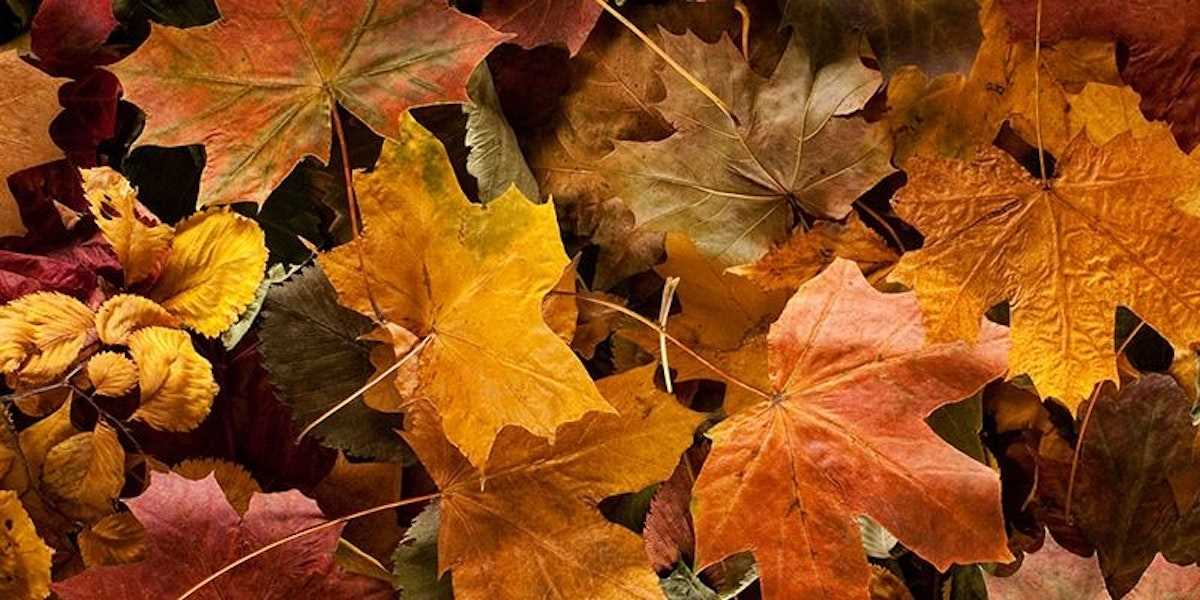
There are various methods you can choose from to compost fallen leaves:
- Compost Bin: If you have a compost bin, simply add the shredded leaves to the bin along with other organic material like kitchen scraps, grass clippings, and garden waste. Turn the pile regularly to aerate it.
- Compost Pile: If you don’t have a compost bin, create a compost pile in a corner of your garden. Layer the shredded leaves with other organic material and turn the pile occasionally.
- Vermicomposting: You can also use worms to decompose the fallen leaves. Create a worm composting bin and add the shredded leaves along with other organic material. The worms will break down the leaves and produce nutrient-rich worm castings.
4. Maintain the compost pile
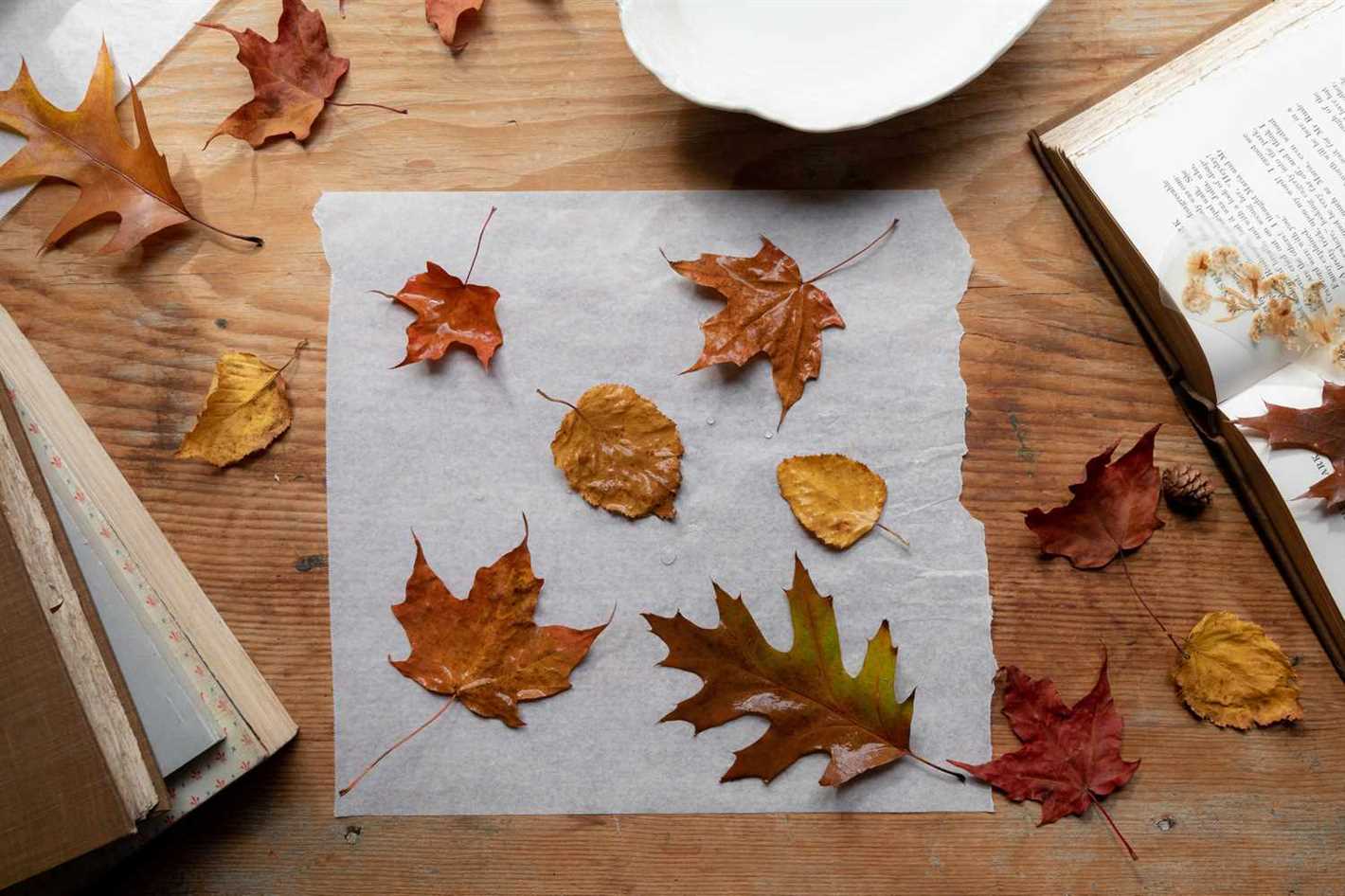
To ensure proper decomposition of the fallen leaves, you need to maintain the compost pile:
- Keep the compost pile moist, but not overly wet. If the pile becomes too dry, water it to maintain the right moisture level.
- Mix the pile regularly to introduce oxygen and aid decomposition.
- Avoid adding any diseased or pest-infested leaves to the compost pile, as it may spread diseases or pests to your garden.
5. Use the compost
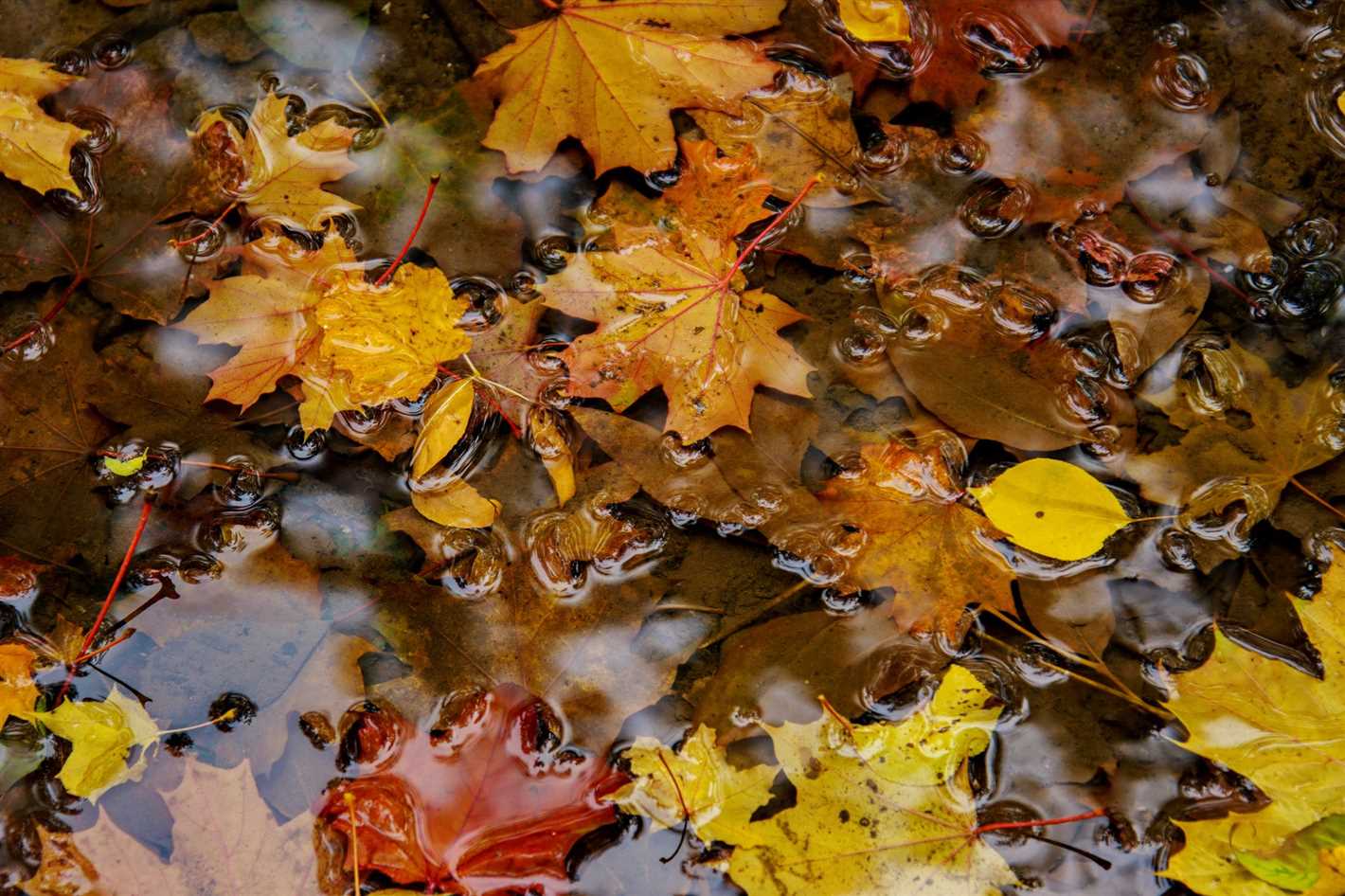
After a few months, the fallen leaves will break down into dark, crumbly compost. This compost can be used to enrich your garden soil, improve plant growth, and retain moisture. Spread the compost around the base of plants, use it as a mulch, or mix it into the soil when planting new plants.
Composting fallen leaves is an eco-friendly and sustainable way to manage garden waste. By following these steps, you can effectively recycle the fallen leaves and create nutrient-rich compost for your garden.
Using Fallen Leaves as Mulch
Fallen leaves can be a valuable resource in your garden. One of the most effective ways to use them is by turning them into mulch. Mulching with fallen leaves has various benefits for your plants, soil, and overall garden health.
1. Insulation and Temperature Control
Using fallen leaves as mulch provides insulation for the soil, protecting it from extreme temperature changes. The layer of mulch helps regulate the soil temperature, keeping it cooler in hot summer months and warmer during cold winter months. This insulation helps create a stable environment for root growth and microbial activity.
2. Weed Suppression
Fallen leaf mulch creates a barrier that suppresses weed growth. By covering the soil surface, the mulch prevents weed seeds from receiving sunlight, which is necessary for germination. Additionally, the layer of mulch acts as a physical obstruction, making it harder for weeds to penetrate the soil surface. This reduces the amount of time and effort required for weeding.
3. Moisture Retention
Mulching with fallen leaves helps retain soil moisture. The layer of mulch acts as a protective cover, preventing excess evaporation of water from the soil. It also helps absorb and retain rainfall, allowing the moisture to slowly penetrate the soil and reach plant roots. This promotes healthier plant growth and reduces the need for frequent watering.
4. Organic Matter and Nutrient Recycling
Fallen leaves are rich in organic matter and nutrients. When used as mulch, they slowly break down over time, releasing these valuable components back into the soil. As the leaves decompose, they enrich the soil with essential nutrients, improving its fertility. This natural recycling process helps create a balanced and nutrient-rich environment for plants.
5. Soil Structure and Erosion Prevention
Mulching with fallen leaves improves soil structure and prevents erosion. As the leaves decompose, they add organic matter to the soil, enhancing its ability to retain moisture and nutrients. This leads to the development of a crumbly and well-aerated soil structure, which is beneficial for plant root growth. Additionally, the layer of mulch provides a protective cover that prevents soil erosion caused by wind and water.
How to Use Fallen Leaves as Mulch:
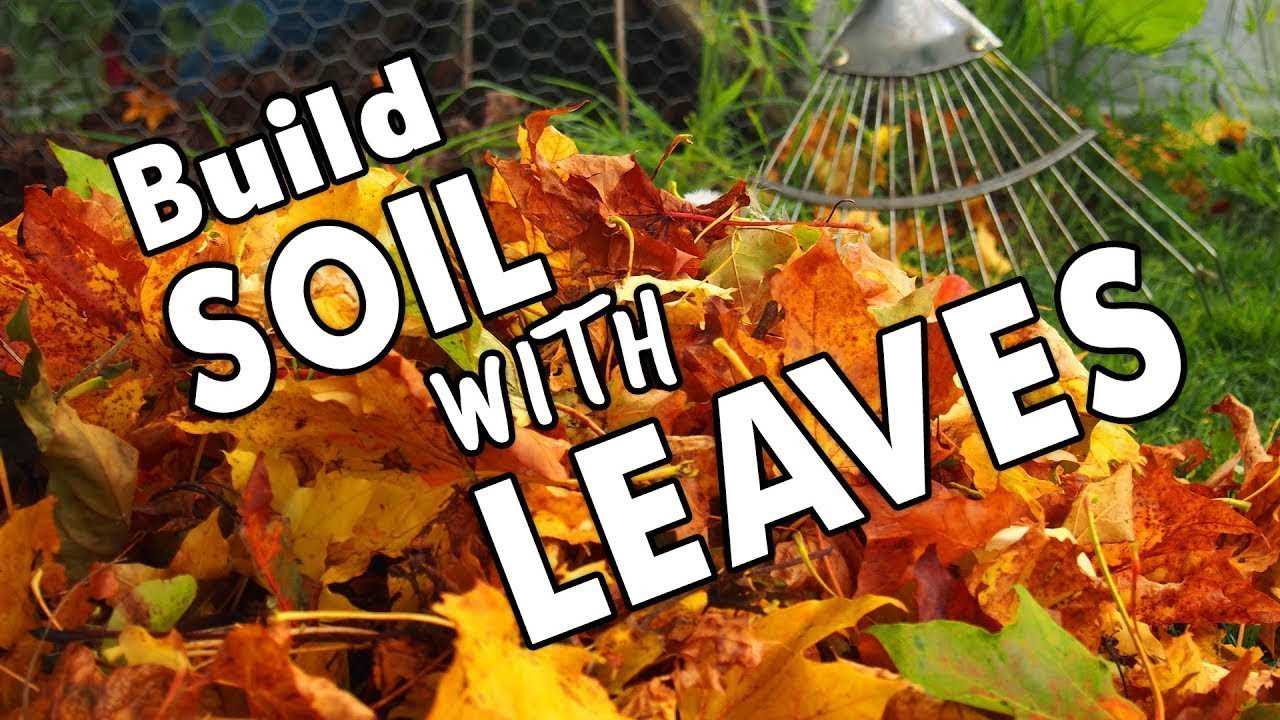
- Rake the fallen leaves into a pile.
- Shred the leaves using a lawnmower or a leaf shredder, if desired. This will speed up the decomposition process.
- Spread a layer of shredded or whole leaves around your plants, keeping them a few inches away from the stems of the plants.
- Water the mulched area to help settle the leaves and enhance their effectiveness.
- Monitor the mulch layer throughout the season and add more leaves as needed to maintain the desired thickness.
Using fallen leaves as mulch is a sustainable and cost-effective way to improve your garden’s health. It conserves water, suppresses weeds, enriches the soil with nutrients, and protects against extreme temperature changes. Start utilizing fallen leaves as mulch in your garden and reap the benefits for years to come!
Fallen Leaves as Plant Fertilizer
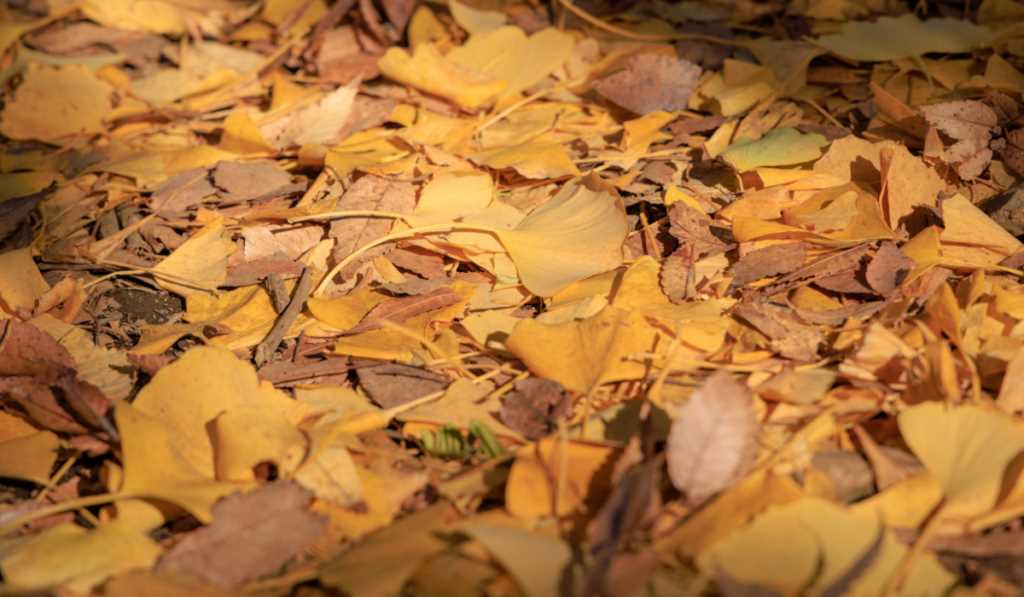
Fallen leaves can be a valuable resource for plant fertilization in your garden. Instead of disposing of them or burning them, you can use them to improve the health and fertility of your soil. Here are some ways you can utilize fallen leaves as plant fertilizer:
1. Leaf Mulching
One of the simplest ways to use fallen leaves as plant fertilizer is through leaf mulching. This involves spreading a layer of shredded leaves on the surface of the soil around your plants. The mulch will help to retain moisture, suppress weeds, and gradually release nutrients as it decomposes. To make leaf mulch, simply collect fallen leaves and run them through a shredder or mow over them with a lawn mower.
2. Composting
Another effective way to utilize fallen leaves is by adding them to your compost pile. Leaves are rich in carbon and make a great addition to compost, balancing out the nitrogen-rich materials such as kitchen scraps or grass clippings. Layering leaves with other compostable materials will help speed up the decomposition process and create rich, nutrient-dense compost for your plants.
3. Leaf Tea Fertilizer
Leaf tea fertilizer is a liquid fertilizer that can be made by steeping fallen leaves in water. To make leaf tea fertilizer, place a bunch of leaves in a bucket or large container filled with water and let them soak for a few weeks. The water will gradually absorb the nutrients from the leaves, creating a nutrient-rich solution that can be used to water your plants or applied as a foliar spray.
4. Leaf Mold
Leaf mold is a dark, crumbly material that forms when leaves are left to decompose over a long period of time. It is a valuable soil amendment that improves the structure and fertility of the soil. To create leaf mold, create a pile of fallen leaves and allow them to break down naturally over the course of several months to a year. You can accelerate the decomposition process by turning the pile occasionally or adding some moisture.
Utilizing fallen leaves as plant fertilizer is not only an eco-friendly practice but also a cost-effective way to improve the health of your soil and promote the growth of your plants. By incorporating fallen leaves into your gardening routine, you can reduce waste and create nutrient-rich environments for your plants to thrive.
Fallen Leaves for Making Leaf Mold
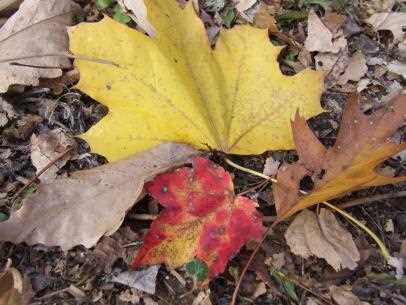
Leaf mold is a valuable type of compost that is made solely from fallen leaves. It is a nutrient-rich organic material that can be used to improve soil structure, retain moisture, and promote healthy plant growth. Here’s how you can utilize fallen leaves effectively to make leaf mold:
- Collecting Fallen Leaves: Rake and gather fallen leaves from your yard or neighborhood. Choose leaves that are relatively dry and free from any diseases or pests.
- Shredding: Shredding the leaves into smaller pieces can speed up the decomposition process. You can use a lawn mower or a leaf shredder for this purpose.
- Creating a Leaf Mold Pile: Build a simple compost pile using the shredded leaves. Make sure the pile is located in a shady area to prevent excessive drying and exposure to strong sunlight.
- Moisture Control: Maintain the moisture content of the leaf mold pile. It should be moist but not waterlogged. If needed, water the pile occasionally to keep it damp.
- Aeration: Regularly turn the leaf mold pile to aerate it and promote decomposition. Use a pitchfork or a garden fork to mix the materials and introduce air into the pile.
- Timeframe: Leaf mold can take anywhere from 6 months to 2 years to fully decompose, depending on various factors such as temperature, moisture levels, and the types of leaves used.
- Using Leaf Mold: Once the leaf mold is dark, crumbly, and earthy smelling, it is ready to be used. Spread it around your garden beds, mix it into potting soil, or use it as a mulch to improve soil fertility and moisture retention.
By following these steps, you can effectively utilize fallen leaves to create nutrient-rich leaf mold that will benefit your garden and plants.
Fallen Leaves for Insulating Garden Beds
Autumn is a time when trees shed their leaves, covering the ground with a vibrant blanket of colors. These fallen leaves are not only beautiful to look at but also have many practical uses. One of the ways you can utilize fallen leaves effectively is by using them to insulate your garden beds during the colder months.
Why Insulate Garden Beds?
Garden beds need protection from the freezing temperatures of winter to ensure that the plants and soil underneath remain healthy. Insulating garden beds helps to create a warmer environment, preventing frost from penetrating the soil and damaging the root systems of your plants.
Step 1: Gather fallen leaves
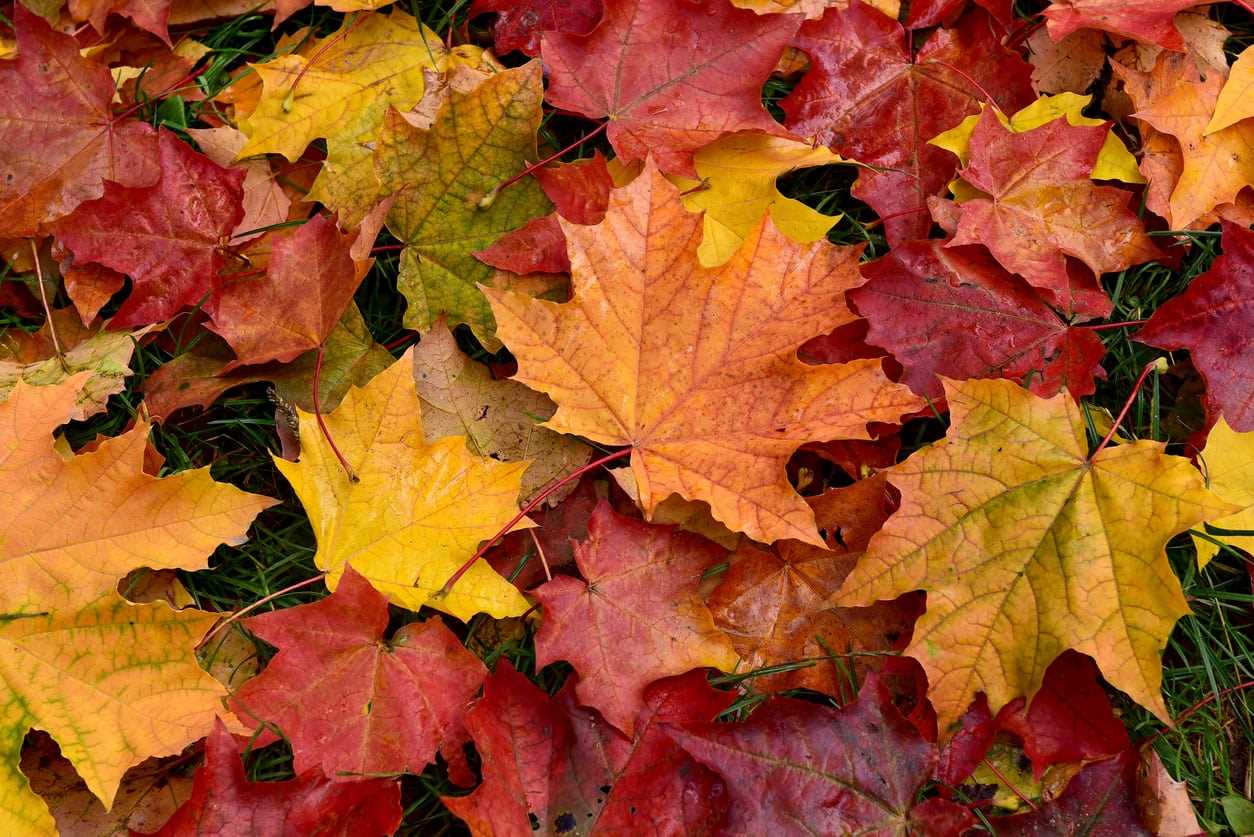
The first step in utilizing fallen leaves for insulating your garden beds is to gather a sufficient amount of leaves. Rake or collect the leaves that have fallen on your garden or in your yard and pile them up in a designated area.
Step 2: Shred the leaves
Shredding the leaves can help them break down more quickly and provide better insulation. You can use a lawn mower with a bag attachment or a leaf shredder to shred the leaves into smaller pieces. This will increase the surface area of the leaves, allowing them to trap more air and provide better insulation.
Step 3: Prepare the garden beds
Before applying the shredded leaves to your garden beds, make sure to prepare them properly. Remove any dead plants or debris from the beds and loosen the soil. This will create a clean and ideal environment for the insulation to work effectively.
Step 4: Apply the shredded leaves
Spread a layer of the shredded leaves evenly over the garden beds. Aim for a thickness of around 6-8 inches to provide adequate insulation. Pay special attention to the base of plants and fragile areas that require extra protection.
Note: If you have perennial plants in your garden beds, it is recommended to leave a small space around the stems to prevent excess moisture buildup and potential rotting.
Step 5: Maintain and monitor
Throughout the winter season, it’s crucial to monitor the condition of the insulation and make adjustments if necessary. If the layer of leaves becomes compacted or wet, add more shredded leaves to maintain the desired thickness and insulation level.
Benefits of using fallen leaves for insulation:
- Provides natural and cost-effective insulation
- Helps retain soil moisture
- Improves soil structure and fertility as the leaves break down
- Reduces weed growth in garden beds
- Supports beneficial organisms and insects
Utilizing fallen leaves for insulating garden beds is a sustainable and practical way to protect your plants during the colder months. By following these steps, you can make the most of nature’s gift and ensure the health and vitality of your garden.
Creating Art and Crafts from Fallen Leaves
When autumn arrives and the trees shed their leaves, it’s the perfect time to get creative and make beautiful art and crafts using these fallen leaves. Here are some ideas to inspire you:
Leaf Pressed Artwork
One of the simplest and most popular ways to use fallen leaves is to press them and create artwork. Here’s how you can do it:
- Collect a variety of colorful and intact leaves.
- Place the leaves between two sheets of absorbent paper or cardboard.
- Stack heavy books or place a weight on top of the stack to press the leaves.
- Leave them pressed for a week or two until they are completely dry.
- Once dry, carefully remove the leaves from the paper and arrange them on a clean surface.
- Using glue or a laminating machine, adhere the leaves to a canvas, cardstock, or any other desired medium.
- Feel free to add other elements like twigs, acorns, or even paint to enhance your artwork.
Leaf Garland
A leaf garland is a beautiful and festive decoration that can be used indoors or outdoors. Follow these steps to create your own leaf garland:
- Gather a bunch of leaves, making sure they are still flexible and not too brittle.
- Using a hole puncher, make a small hole near the stem of each leaf.
- Thread a string or twine through the holes, spacing the leaves evenly.
- Tie a loop at each end of the string to hang the garland.
- Your leaf garland is now ready to be displayed.
Leaf Coasters
Protect your tables and add a touch of nature with leaf coasters. Here’s how you can make them:
- Choose several large, flat leaves with interesting shapes and colors.
- Place the leaves on a clean surface and coat them with a layer of decoupage glue or a mixture of white glue and water.
- Allow the glue to dry completely, and then apply another layer or two to ensure durability.
- Once dry, carefully cut out the leaf shapes and trim any excess glue or paper.
- Your leaf coasters are ready to use! Place them under glasses or cups to protect your furniture.
Remember, the possibilities of creating art and crafts from fallen leaves are endless. Let your imagination run wild and enjoy the process of bringing the beauty of nature into your creations!
Questions and Answers:
What are some effective ways to utilize fallen leaves?
There are several ways to utilize fallen leaves effectively. One option is to use them as mulch in your garden beds to help insulate the soil and retain moisture. Another option is to compost the leaves to create nutrient-rich soil amendment. You can also use the leaves as a natural weed barrier or incorporate them into your flower beds to add organic matter. Finally, fallen leaves can be used as a natural and free source of carbon for your compost pile.
How do I use fallen leaves as mulch in my garden?
Using fallen leaves as mulch is simple. First, rake the leaves into a pile and remove any large sticks or debris. Then, spread a layer of leaves around your garden plants, making sure not to cover the stems or crowns of the plants. The mulch will help insulate the soil, suppress weeds, and retain moisture. As the leaves break down, they will also add organic matter to the soil.
Can fallen leaves be used to make compost?
Yes, fallen leaves are a great addition to your compost pile. To make leaf compost, gather the leaves and shred them to speed up the decomposition process. Then, mix the shredded leaves with other compostable materials such as kitchen scraps, grass clippings, and twigs. Turn the compost pile regularly to provide oxygen and help the materials break down. In a few months, you will have nutrient-rich compost that can be used in your garden.
How can fallen leaves be used as a natural weed barrier?
Fallen leaves can be used as a natural weed barrier by creating a layer of leaves around your garden plants or flower beds. This layer of leaves will help smother any existing weeds and prevent new ones from growing. As the leaves break down, they will also add organic matter to the soil and improve its fertility. Just make sure not to pile the leaves too thickly, as this can create a damp environment that may promote disease in your plants.
Are there any other creative uses for fallen leaves?
Yes, there are many other creative uses for fallen leaves. For example, you can use them to make leaf mold, a type of compost made solely from leaves. Leaf mold is high in nutrients and is excellent for improving soil structure. Fallen leaves can also be used for art projects, such as leaf pressing or leaf collages. Finally, you can use the leaves as a natural and biodegradable packaging material.







